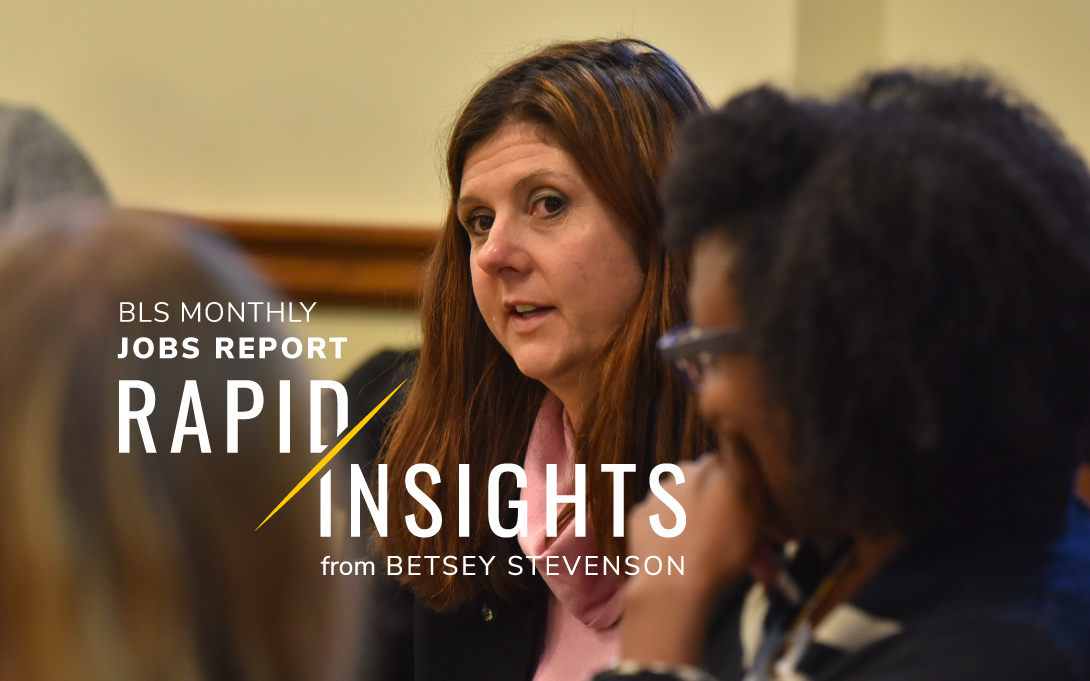
In April, U.S. total nonfarm employment rose by 253,000 jobs, which exceeded expectations as the economy continued to expand.. However, revisions to data from the past two months subtracted 149,000 jobs, which is indicative of a labor market that is slowing down. The unemployment rate ticked down to 3.4%, its lowest in over 50 years. Labor force participation and the employment rate were both stable, however they have both been rising steadily, albeit slowly, over the year. Over the past year, the employment rate has risen by 0.5 percentage point and the number of employed people has increased by 3 million.
“The labor market remains strong and the continued growth has helped to reduce stubborn racial gaps in employment and unemployment. The unemployment rate among Black workers is the lowest on record and the employment rate of Black women is the highest it has been since the late 1990s,” said Betsey Stevenson, economist at the University of Michigan’s Gerald R. Ford School of Public Policy.
1. Broad gains were made across all major industries in April
Most industries are continuing to add jobs faster than in the two years prior to the pandemic. In April, the only sectors to add fewer jobs than their pre-pandemic average were construction and information services. Growth continues to be largest in education and health services, which was slow to grow out of the pandemic.
2. Large metro areas have struggled to get employment back to pre-pandemic levels
Nine of the top 20 metro areas have lost employment relative to the beginning of the pandemic, while 11 have grown. Dallas, Tampa, and Phoenix have seen employment grow the fastest since the pandemic, with employment substantially higher in both cities compared to the start of the pandemic. These three cities also had the fastest population growth in the decade prior to the pandemic. The three largest cities prior to the pandemic–New York, Los Angeles, and Chicago–have all had net declines in jobs since the pandemic. Los Angeles has had the largest loss of jobs, with 4%fewer jobs in March compared to the start of the pandemic. Los Angeles and Chicago also had the slowest growth among top 10 large cities in the decade prior to the pandemic. Detroit and Baltimore, both cities that currently have fewer jobs than at the start of the pandemic, had lost population in the decade prior to the pandemic. Taken together, the pandemic appears to have magnified population shifts that were underway prior to the pandemic.
3. Labor force participation rates are up across the board for women over the past 12 months
Women’s labor force participation is up over the year, by 0.6 percentage point and reflects growth among women of all ages and education levels. The biggest growth occurred among women of color, with Hispanic women’s labor force participation rate rising 2.1 percentage points and Black women’s labor force participation rising 2.2 percentage points over the year. Gains by educational attainment appear smaller overall, with the largest gains occurring among women with less education.
In contrast with women, men’s labor force participation rates rose only among White men, with declines occurring among Black and Hispanic men. The declines were concentrated among men with the least education, with labor force participation rates falling by a percentage point among those with only a high school degree.
4. Labor force participation rates are converging to pre-pandemic trends
The challenge with predicting labor force participation growth is that the pandemic disrupted a five-year trend of rapid growth that may not have continued even if the pandemic had not occurred. The upward trend in labor force participation between 2015 and the start of the pandemic reflected a five-year period of strong growth for women and moderate growth for men. The strong growth saw prime-age women’s labor force participation rate recover to highs last seen in the late 1990s. While prime-age men’s labor force participation rates remained low by historical standards, it was the longest sustained period of increase since the 1950s.
The pandemic interrupted this growth. Over the past few years, it was impossible to know whether prime-age labor force participation would close the gap with this previous trend. Over the past year, however, it has become clear that prime-age women and men are converging not to their old participation rates, but to the rate predicted by the trend growth that began in 2015.
5. Black women’s employment rates are at a 22-year high
Over the past year, Black women’s employment rate has risen 2.5 percentage points, bringing it to 61.1%. In February 2020, Black women’s employment rate was 60.8%after having risen steadily since 2011. Black women were one of the hardest hit groups during the pandemic with higher rates of unemployment, the highest rates of death from COVID-19, and high rates of employment in essential services during the pandemic.
And yet, across just about every measure, Black women have more than fully rebounded. Black women’s labor force participation rate is up 2.2 percentage points over the past year, and in April, it was the same as February 2020. Their unemployment rate in April was 4.2%, a record low. While it remains higher than the 2.8 % among White women, the gap between the two has shrunk substantially over the year.
About this analysis
The University of Michigan’s monthly Rapid Insights labor market analysis conducted by Betsey Stevenson, economist at the Gerald R. Ford School of Public Policy; and Benny Docter, senior data and policy analyst at Poverty Solutions. The project is funded by the Robin Hood Foundation, with support from the Ford School and Poverty Solutions.
